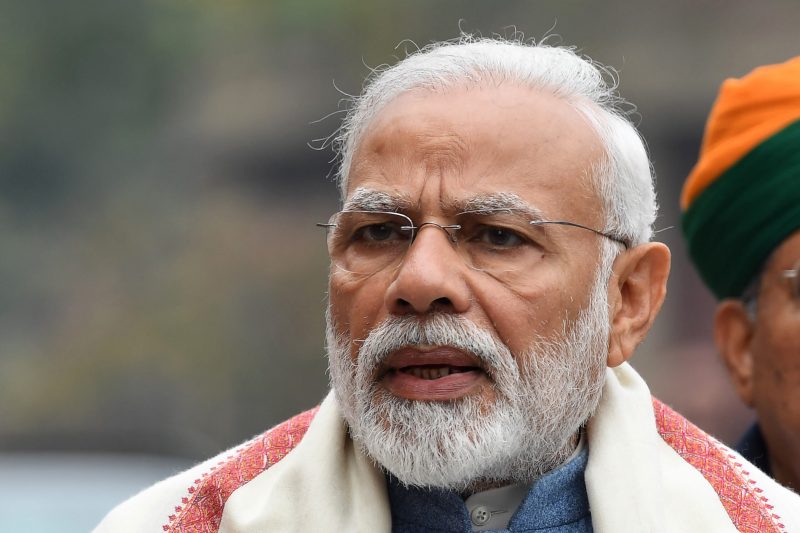India’s central bank cuts rates a week before election
Narendra Modi was elected prime minister on a promise to shake up the economy and boost jobs but questions are now being asked about his competence (PRAKASH SINGH)
Mumbai (AFP) – India’s central bank cut interest rates on Thursday, delivering a shot in the arm to Prime Minister Narendra Modi’s poll hopes a week before the start of a marathon general election.
The second snip in borrowing costs this year comes as central banks around the world take a softer line on monetary policy in the face of a slowdown in the global economy.
Modi swept to power in 2014 on a business-friendly manifesto that promised to shake up Asia’s third-largest economy and boost jobs, securing India’s first majority government in three decades.
But with growth stuttering and unemployment recently reported to be at a decades-long high, 68-year-old Modi is vulnerable to attack as questions are asked about his economic competence.
The Reserve Bank of India (RBI) said the benchmark repo rate — the level at which it lends to commercial banks — would be reduced by 25 basis points to 6.00 percent.
It was the second consecutive reduction under governor Shaktikanta Das, a Modi ally who was appointed in December after his predecessor quit following a spat with the government over alleged interference.
The bank said the time was ripe for a cut, with inflation well below its target of four percent. The move is expected to boost consumer sentiment going into the polls.
“The output gap remains negative and the domestic economy is facing headwinds, especially on the global front,” the bank said in a statement.
“The need is to strengthen domestic growth impulses by spurring private investment, which has remained sluggish,” it added.
The decision was predicted by all but two of 47 analysts surveyed by Bloomberg News.
– Dovish tone –
Das has now reversed two rate hikes brought in by previous governor Urjit Patel last year.
The government was believed to be unhappy with the RBI under Patel’s tenure over its apparent reluctance to cut rates to stimulate the economy.
He quit at the end of last year, reportedly owing to pressure from the finance ministry to enact policies that would help spur growth ahead of the mammoth elections, which run from April 11 to May 19.
The opposition Congress Party accuses Modi’s Bharatiya Janata Party-led administration of trying to influence the bank and has pledged in its manifesto to “reverse the unwarranted and illegal interference” in its functioning.
Modi has announced a number of high-profile economic policies during his tenure, including the introduction of a new single tax on goods and a controversial currency ban.
But the economy is stuttering, with growth slowing to 6.6 percent in October-December, from 7.1 percent in the previous three months and well off the 8.2 percent seen a year ago.
Central banks around the world are adopting a more dovish tone as they reassess their monetary policies to address flagging growth.
The US Federal Reserve raised its key rate four times in 2018 but has said it will not increase this year with some observers are even tipping a cut.
The European Central Bank, the Bank of Japan, the Bank of England and Reserve Bank of Australia are also looking sounding more cautious as the global economic outlook looks less certain.
Modi’s pledge to create millions of jobs has also come under scrutiny. A government report leaked in February showed unemployment at a 45-year-high of 6.1 percent in 2017-18.
India’s general election will be the largest democratic exercise of its kind ever held with around 900 million voters eligible to cast ballots. Results are expected on May 23.
Disclaimer: Validity of the above story is for 7 Days from original date of publishing. Source: AFP.


